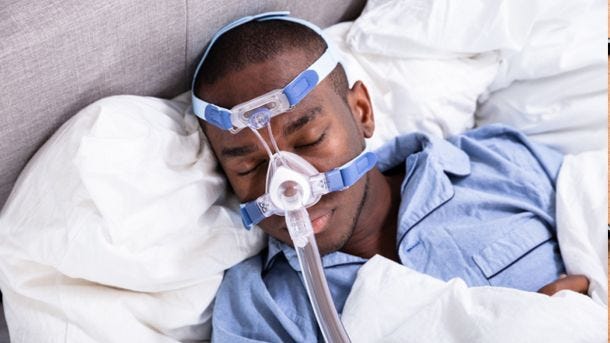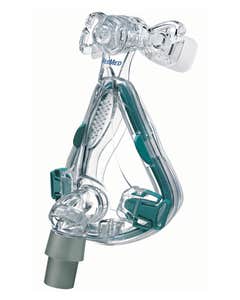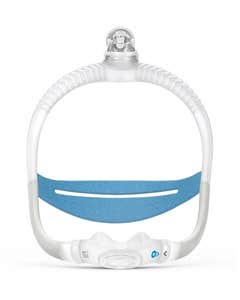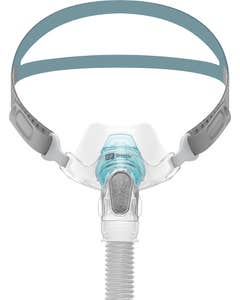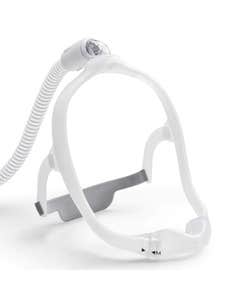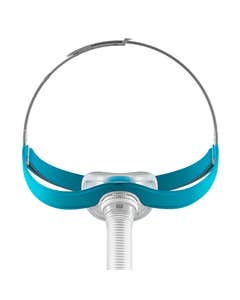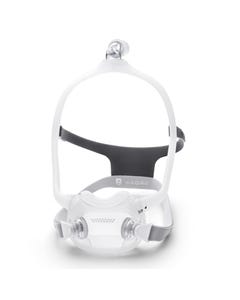What are the Benefits Of CPAP Therapy?

Every day, hundreds of people come to the conclusion that the benefits of CPAP therapy in the short term are nothing short of life changing. For those new to CPAP therapy, the challenges of the normal adjustment period can make it difficult to get to a level of CPAP compliance where the benefits can manifest themselves. It’s never a matter of being redundant to remind them of at least five things that they should know about the benefits of CPAP compliance.
Even though many people that begin CPAP therapy experience some of the short-term benefits almost immediately, an equal number of people take longer to manifest the benefits. Since every person and their OSA symptoms are different, these difference can affect how long it takes to feel the benefits, and may be dependent on the individual’s mindset. Here at The CPAP Shop, we’ve undertaken a number of surveys of CPAP therapy users to show the CPAP compliance benefits experienced by actual users.
1. Better Attitude
It can be difficult to maintain a positive attitude under the best of circumstances, but when your body and mind are suffering from the effects of inadequate sleep caused by OSA, the challenge becomes even more difficult. One of the more insidious things about OSA is that the longer it goes untreated, the more your negative change in attitude towards life and others becomes normalized.
It is only with the use of CPAP and maintaining CPAP compliance that it becomes obvious that your attitude was sabotaging your outlook and relationships. Untreated sleep apnea can even lead to depression, which is another reason why CPAP compliance can change your attitude for the better.
As you maintain CPAP compliance and begin to see the sleep benefits, you also begin to see the positive attitude changes. It is not only the halt to symptoms like daytime sleepiness, lethargy, and headaches that prompt the attitude turnaround; it is a general sense of well-being that overtakes many CPAP therapy patients. It’s hard to put a price on that, but whatever it costs, I think most people would be buying. The reality is that it only requires your compliance to using your CPAP machine every night for a minimum of four hours.
2. Less Prone to Car Accidents
Although going through that early morning commute in a sleepy fog can be the cause of car accidents, a lack of CPAP compliance can manifest itself behind the wheel at any time of the day or night. When you’re better rested, you significantly decrease your chances of being in a car accident. The potential accident statistics for OSA patients that are drivers as well as those that are professional drivers are staggering. We have discussed on this blog the potential negative outcomes and effects here and here.
3. Slows the Aging Process
While aging is not a bad thing, doing so prematurely is something none of us want to experience. Not only can it have a negative effect on our relationships, it can even affect the trajectory of our careers. Studies have been done that show how CPAP compliance can even improve our looks in terms of slowing the aging process.
4. Improved Ability to Concentrate and Problem Solve
The science behind diminished ability to concentrate as well as general cognitive ability due to lack of CPAP compliance for those with OSA are well documented. Since proper oxygenation to the blood stream and therefore the brain is a major component of OSA, depriving your brain of the oxygen that it needs leads to all types of problems— both short term and long term.
Your ability to concentrate, reason, and think clearly are just the milder problems potentially associate with non-compliance. Long-term changes to the brain and even life-threatening conditions can also be part of the equation. This article explains the science behind this in general terms and why CPAP compliance can improve your brain function.
5. Better Sex Life
If all those benefits do not show how CPAP compliance can have a profound effect on your life in numerous ways, then let’s get right to the heart of the matter—CPAP compliance can have a definite impact on improving your sex life. Sure, the more energy you have via compliance will benefit your sex life, but it goes much deeper than that. We’ve talked about how CPAP therapy can improve sexual performance in men and how it can positively impact erectile dysfunction here and here.
There are hundreds of benefits to CPAP compliance that affect all aspects of our daily lives, so this is only a list of a few of the more obvious reasons. As humans, we often buck against making a habit of things that are good for us if we feel like it inconveniences us, which is also why bad habits become so ingrained so quickly.
CPAP compliance is a group effort with family members, medical professionals, sleep specialists, and your CPAP equipment provider. With all of them working together with you, it is possible to overcome any challenge to non-compliance and reap the benefits of CPAP therapy that are evident every day for the rest of your much longer and happier life.
How to Become CPAP Compliant
Proper fit and consistent usage of a CPAP machine are very important for sleep apnea sufferers. Unfortunately, CPAP compliance is low – usually between 60 to 85 percent – as many sleep apnea sufferers grow impatient or give up on treatment altogether. Many patients don’t understand that CPAP therapy may not work perfectly the first time. In fact, it usually takes a few adjustments to find the proper fitting mask and airflow pressure. A proper fitting mask reduces discomfort, therefore, it is necessary to have complete equipment knowledge. In addition, some patients may have a doomed-to-fail attitude about CPAP therapy, which increases their probability of noncompliance.

The CPAP Shop has numerous masks and extensive customer service to ensure that customers find the most ideal mask and maximize their compliance rate. CPAP machines pump air from a generator through tubing, a mask and into the nose or mouth. The slight pressure keeps the airway open without interfering with breathing. The three main types of masks include nasal, full face, and nasal pillow masks.
Choosing the Right Mask is Very Important for CPAP Compliance
The nasal mask is a triangular in shape and fits over the nose. It has a silicon cushion that helps make it more comfortable on the face. It comes in two different styles and is an ideal choice for those who may feel claustrophobic from a full face mask.
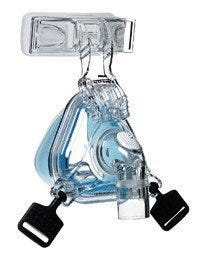
The nasal pillow mask has two soft silicon “pillows” which are slightly inserted into the nose. Many CPAP users – especially those who like to sleep on their side, have beards or mustaches, are claustrophobic, prefer minimal face contact, or are allergic to the mask material – have found greater comfort with this mask. It is also lighter weight and operates more quietly than the traditional nasal or full face masks.
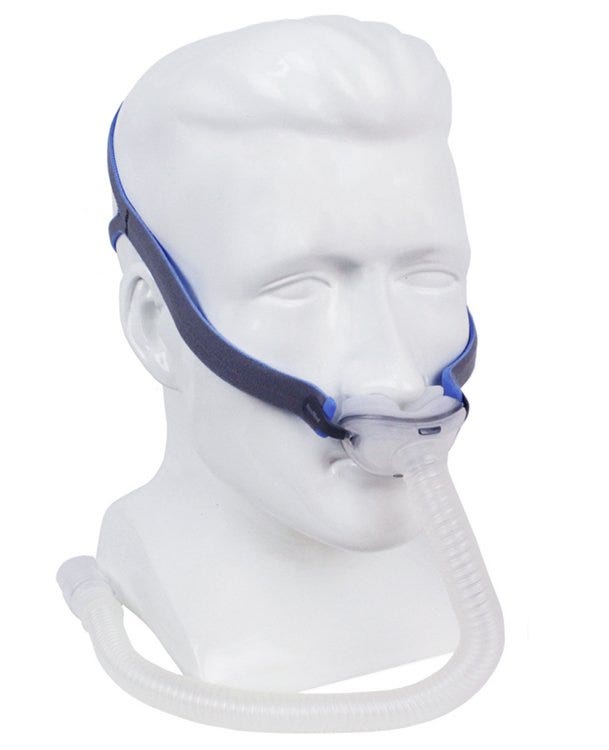
A full face mask is a triangular shaped mask that covers the nose and mouth. It has a soft silicon cushion around the nasal area to seal tightly against the face. This type of mask is great for patients who breathe through their mouth or toss and turn while sleeping. Because the mask covers the mouth, there is less strain on the nasal passage. This eliminates nose bleeds, scabs, dry and itchy noses, and other unwanted side effects.
Not only does The CPAP Shop offer a wide variety of masks in each category, it has developed extensive customer service to help reduce noncompliance among its customers.
Chris Vasta is the president of The CPAP Shop and an expert in sleep and respiratory therapy. He often provides insights on product design and functionality on various manufacturers’ prototypes and is frequently tapped to provide reviews on new releases.
Every day, hundreds of people conclude that the benefits of CPAP therapy in the short term are nothing short of life-changing. For those new to CPAP therapy, the challenges of the normal adjustment period can make it difficult to get to a level of CPAP compliance where the benefits can manifest themselves. It’s never a matter of being redundant to remind them of at least five things that they should know about the benefits of CPAP compliance.
Even though many people that begin CPAP therapy experience some of the short-term benefits almost immediately, an equal number of people take longer to manifest the benefits. Since every person and their OSA symptoms are different, these differences can affect how long it takes to feel the benefits and may be dependent on the individual’s mindset. Here at The CPAP Shop, we’ve undertaken a number of surveys of CPAP therapy users to show the CPAP compliance benefits experienced by actual users.
CPAP Therapy Benefits
In this informative, we briefly discuss some of the key benefits of CPAP therapy for healthy living. Keep scrolling to know the CPAP therapy benefits.
Improves Heart Health
There are many benefits to heart health when using CPAP therapy. The biggest benefit is that it prevents heart disease. Heart disease and sleep apnea generally can go hand-in-hand because if a person suffers from sleep apnea, they stop breathing many times throughout the night. Because of these breathing pauses, a person's blood pressure is likely to be high and their blood oxygen levels low. Using CPAP therapy to treat sleep apnea not only prevents these heart problems, but it can also regulate heartbeat, and protect patients from congestive heart failure and coronary artery disease.
Better Attitude
It can be difficult to maintain a positive attitude under the best of circumstances, but when your body and mind are suffering from the effects of inadequate sleep caused by OSA, the challenge becomes even more difficult. One of the more insidious things about OSA is that the longer it goes untreated, the more your negative change in attitude towards life and others becomes normalized.
It is only with the use of CPAP and maintaining CPAP compliance that it becomes obvious that your attitude was sabotaging your outlook and relationships. Untreated sleep apnea can even lead to depression, which is another reason why CPAP compliance can change your attitude for the better.
As you maintain CPAP compliance and begin to see the sleep benefits, you also begin to see the positive attitude changes. It is not only the halt to symptoms like daytime sleepiness, lethargy, and headaches that prompt the attitude turnaround; it is a general sense of well-being that overtakes many CPAP therapy patients. It’s hard to put a price on that, but whatever it costs, I think most people would be buying. The reality is that it only requires your compliance to use your CPAP machine every night for a minimum of four hours.
Helps with Sleep and Weight Loss
Since untreated sleep apnea typically wakes people up very frequently during the night, they are not getting the proper sleep they need. As a result, those who are sleep deprived tend to have worse food cravings and a bigger appetite. However, when properly treated with CPAP therapy, sleep apnea patients who get the proper amount of sleep have a reduced risk of obesity, and also have more energy throughout the day to motivate them to exercise more frequently.
Reduces Stroke Risk Factors
When being treated for sleep apnea, a person's blood pressure is better regulated, which if high, is a major risk factor for strokes. Some research even suggests that CPAP therapy can improve overall health in those who have already suffered from a stroke.
Less Prone to Car Accidents
Although going through that early morning commute in a sleepy fog can be the cause of car accidents, a lack of CPAP compliance can manifest itself behind the wheel at any time of the day or night. When you’re better rested, you significantly decrease your chances of being in a car accident. The potential accident statistics for OSA patients that are drivers as well as those that are professional drivers are staggering. We have discussed on this blog the potential negative outcomes and effects here and here.
Slows the Aging Process
only can it have a negative effect on our relationships, but it can also even affect the trajectory of our careers. Studies have been done that show how CPAP compliance can even improve our looks in terms of slowing the aging process.
Improved Ability To Concentrate And Solve Problems
The science behind diminished ability to concentrate as well as general cognitive ability due to lack of CPAP compliance for those with OSA are well documented. Since proper oxygenation to the bloodstream and therefore the brain is a major component of OSA, depriving your brain of the oxygen that it needs leads to all types of problems— both short-term and long-term.
Your ability to concentrate, reason, and think clearly is just the milder problem potentially associated with non-compliance. Long-term changes to the brain and even life-threatening conditions can also be part of the equation. This article explains the science behind this in general terms and why CPAP compliance can improve your brain function.
Improves Mental Health
Those who have untreated sleep apnea have a higher risk of suffering from mental health. When treating sleep apnea, people get a better night's sleep which results in better mood and overall mental health throughout the day. The use of a CPAP machine for sleep apnea can lessen feelings of depression and anxiety.
Better Sex Life
If all those benefits do not show how CPAP compliance can have a profound effect on your life in numerous ways, then let’s get right to the heart of the matter—CPAP compliance can have a definite impact on improving your sex life. Sure, the more energy you have via compliance will benefit your sex life, but it goes much deeper than that. We’ve talked about how CPAP therapy can improve sexual performance in men and how it can positively impact erectile dysfunction here and here.
There are hundreds of benefits to CPAP compliance that affect all aspects of our daily lives, so this is only a list of a few of the more obvious reasons. As humans, we often buck against making a habit of things that are good for us if we feel like it inconveniences us, which is also why bad habits become so ingrained so quickly.
CPAP compliance is a group effort with family members, medical professionals, sleep specialists, and your CPAP equipment provider. With all of them working together with you, it is possible to overcome any challenge to non-compliance and reap the benefits of CPAP therapy that are evident every day for the rest of your much longer and happier life.
Reduces Snoring
Snoring is one of the main symptoms of sleep apnea. That's a reason why sleep apnea goes unnoticed the majority of the time because a person cannot detect their own snoring while asleep. Snoring occurs when the airway is narrowed, so CPAP therapy helps keep the airway open to prevent snoring.
How to Become CPAP Compliant
Proper fit and consistent usage of a CPAP machine is very important for sleep apnea sufferers. Unfortunately, CPAP compliance is low – usually, between 60 to 85 percent – as many sleep apnea sufferers grow impatient or give up on treatment altogether. Many patients don’t understand that CPAP therapy may not work perfectly the first time. In fact, it usually takes a few adjustments to find the proper fitting mask and airflow pressure. A properly fitting mask reduces discomfort, therefore, it is necessary to have complete equipment knowledge. In addition, some patients may have a doomed-to-fail attitude about CPAP therapy, which increases their probability of noncompliance.
The CPAP Shop has numerous masks and extensive customer service to ensure that customers find the most ideal mask and maximize their compliance rate. CPAP machines pump air from a generator through the tubing, a mask, and into the nose or mouth. The slight pressure keeps the airway open without interfering with breathing. The three main types of masks include nasal, full-face, and nasal pillow masks.
Choosing the Right Mask is Very Important for CPAP Compliance
The nasal mask is triangular in shape and fits over the nose. It has a silicon cushion that helps make it more comfortable on the face. It comes in two different styles and is an ideal choice for those who may feel claustrophobic from a full-face mask.
The nasal pillow mask has two soft silicon “pillows” which are slightly inserted into the nose. Many CPAP users – especially those who like to sleep on their side, have beards or mustaches, are claustrophobic, prefer minimal face contact, or are allergic to the mask material – have found greater comfort with this mask. It is also lighter weight and operates more quietly than the traditional nasal or full-face masks.
A full face mask is a triangular-shaped mask that covers the nose and mouth. It has a soft silicon cushion around the nasal area to seal tightly against the face. This type of mask is great for patients who breathe through their mouth or toss and turn while sleeping. Because the mask covers the mouth, there is less strain on the nasal passage. This eliminates nose bleeds, scabs, dry and itchy noses, and other unwanted side effects.
Not only does The CPAP Shop offer a wide variety of masks in each category, but it has developed extensive customer service to help reduce noncompliance among its customers. If you have any questions about any of our products or would like to learn more, give us a call at 866-414-9700. Our expert staff would be happy to help!



